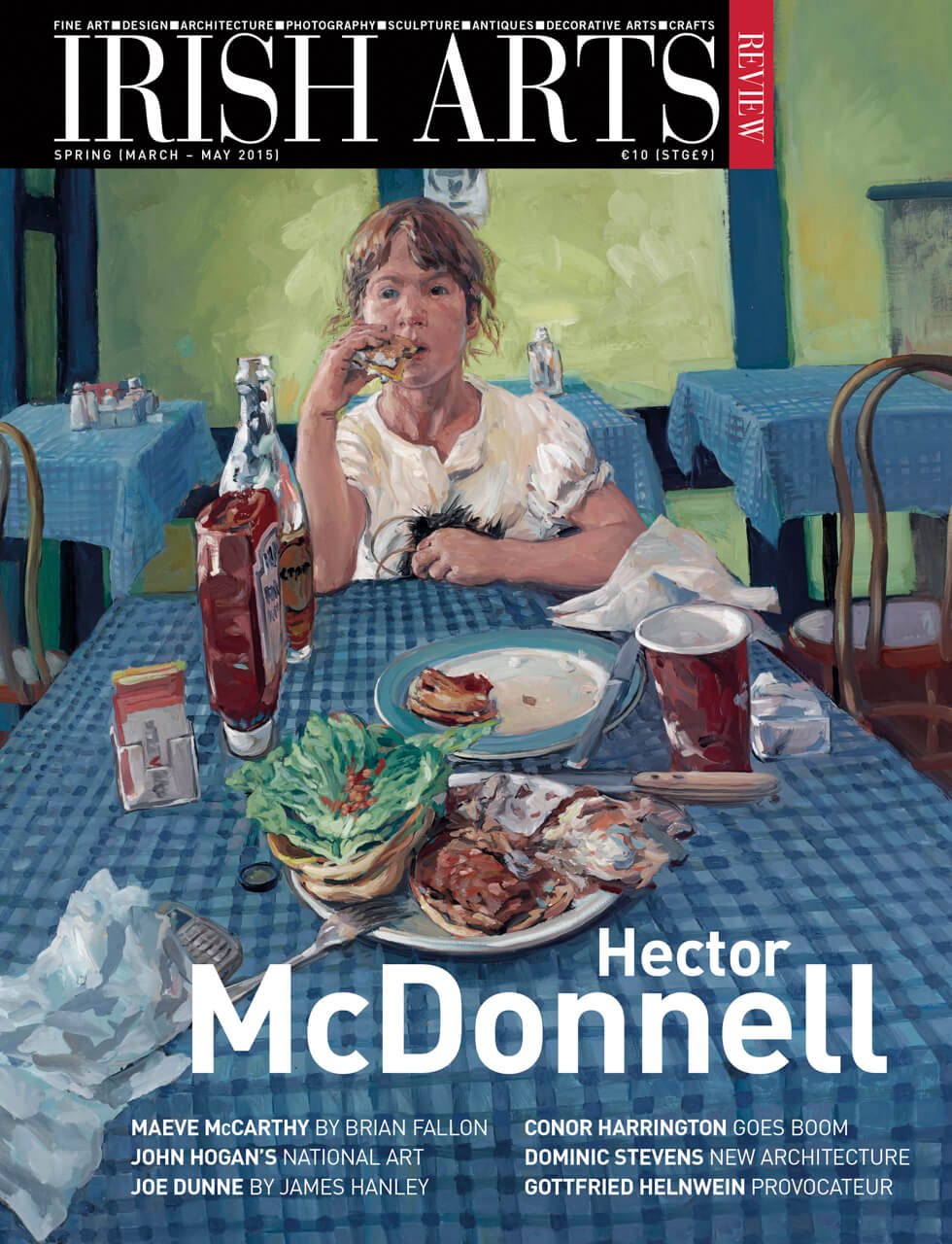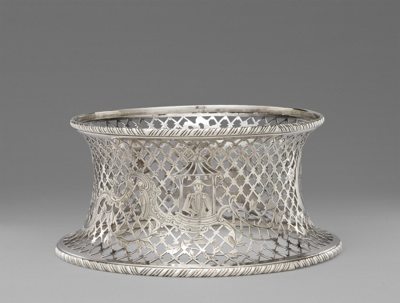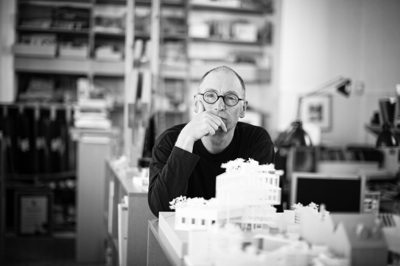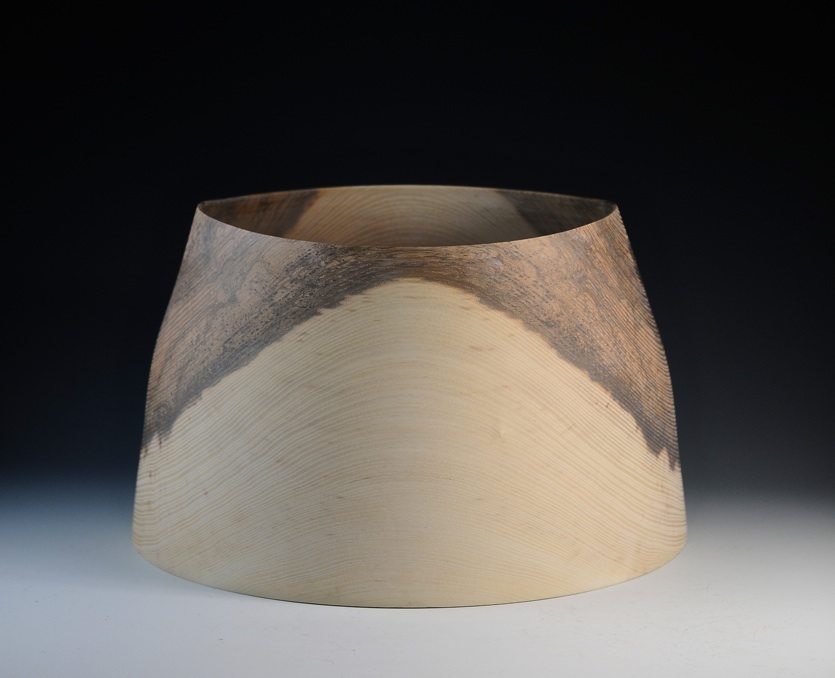
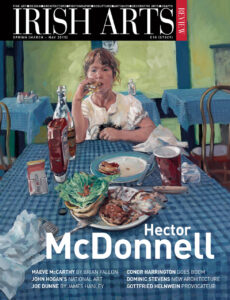
Susan Rogers visits woodturner Liam Flynn at his County Limerick studio
One of the world’s most innovative and creative woodturners, Liam Flynn has been making vessels for 30 years. Over the course of that time his work has become synonymous with elegance and refinement. A native of Abbeyfeale, Co Limerick, Liam Flynn continues to work in the workshop that was once his grandfather’s. A boyhood friend introduced him to woodturning thereby setting him on a path that has seen him become one of the most important woodturners of his generation. His track record is impressive, with work in permanent collections nationally and internationally, including the National Museum of Ireland, Dublin, the Department of Foreign Affairs Collection, Dublin, the Victoria & Albert Museum, London, the Minneapolis Institute of Arts and the Fitzwilliam Museum, Cambridge in the U.K.
Since his early days as a woodturner Flynn has worked in green turning, the process of turning and shaping a piece of unseasoned wood. As it dries it warps and distorts naturally. Choosing the correct piece of wood is an essential part of the making process and integral to the unique form of the final piece. Akin to a virtuoso performance, Flynn does the entire turning in one go, allowing the piece to move in the finish.
In each new series Flynn focuses on a particular element. Recently he has turned his attention to expanding the openings of his vessels. Flynn’s signature inner-rimmed vessels create the illusion that a smaller vessel occupies the inside of an outer one. Where the internal world of his double-rimmed vessels are darkly mysterious and secretive, the interiors of his recent vessels announce themselves expressively. As the vessel dries it is clamped to encourage a beautifully delicate, undulating shape along the opening. In marked contrast to his ebonised pieces, the pale bleached vessels make a striking contrast in tone and a complementary completion of the series.
Liam Flynn’s work has often been compared to ceramics because of the delicacy and subtly in the appearance of their form. The walls of his vessels are remarkably thin, translucent when held to the light. In the 1980s Flynn became aware of the Wood Turning Movement, which came to prominence in the USA in the 1970s. Woodturners like David Ellsworth turned their attention to the creation of objects that were not simply utilitarian but focused on design and aesthetics. It was an approach that had more in common with ceramics and glass than woodturning. Ellsworth has been Flynn’s greatest influence. For many woodturners it is the wood grain that is the primary element and most important aspect of the finished piece. In the work of Liam Flynn however it is form and colouring that dominates. Both of these characteristics can be seen in the work of the Dutch woodturner Maria Van Keseteren, who came to Ireland in the 1960s to set up the woodturning workshop at the Kilkenny Design Workshops. Flynn first encountered her work at the ‘Wood’ exhibition at the British Crafts Centre in London in the 1980s. He identified both with her forms and her resistance to the attitude of the importance of the wood above all else that dominated thinking at that time. Similarly, for Flynn the wood is secondary to the forms he creates.
Although his recent work includes eucalyptus, he continues to work mainly with locally sourced oak, which he says has a good open grain and produces a textural change as well as a shape change as it dries. After sanding he wire brushes the surface which opens the grain even more.
Where the internal world of his double-rimmed vessels are darkly mysterious and secretive, the interiors of his recent vessels announce themselves expressively
The surface draws you in: medullary rays stand proud of the surface and the complexity of the finish provides a contrast to the elegant form. Flynn rejects the traditional method of smoothly sanding a piece preferring instead to leave an imprint of the making process in evidence.
There is a beautiful subtlety to the finished work. These are simple yet dramatic, uncomplicated yet challenging forms. All of the sanding and finishing is done when the piece is still wet, before it has fully dried out, producing a textural finish. There is a tension between the delicacy of the finished exterior and the robust impression of the tool marks that are left exposed on the interior. There is restraint on the exterior, while the visible interior shows an expressive energy in these extraordinarily beautiful forms.
Susan Rogers is a lecturer in Furniture and Design History at GMIT Letterfrack, Co. Galway.
